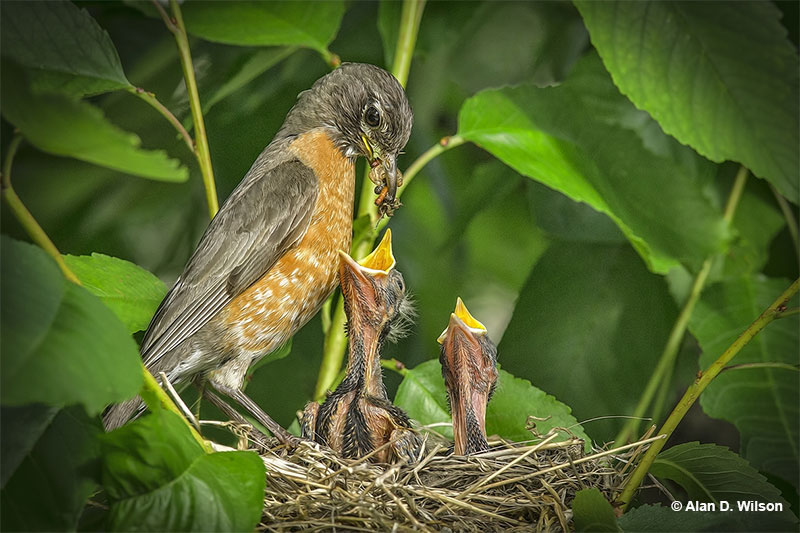
Although we often treat them as a homogenous group, birds are a diverse bunch. In line with that, their reproductive strategies and the ways they provide for their precious offspring vary considerably.
Different bird families provide for their chicks in myriad ways, but one thing is common – all provide some form of parental care and feeding support for their feathery (or not-so-feathery) babies.
Let’s delve into the weird and wonderful world of bird baby foods. Be warned – it will not be a picnic for the squeamish. Although butchered rodents, regurgitated fish, bugs, and crop milk may all seem horrendous, rest assured that these are actually the most nutritious choices for the precious new generation of birds.
On this page
The Diet of Baby Birds
The most radical difference in bird feeding schemes is between altricial and precocial birds.
In precocial species, the baby birds are instantly mobile and can forage on their own as soon as they spend their egg yolk supply. That means that they will start eating adult food from day one. Pheasant, chicken, and quail parents will guide the chicks to feeding places but will not actively feed them.
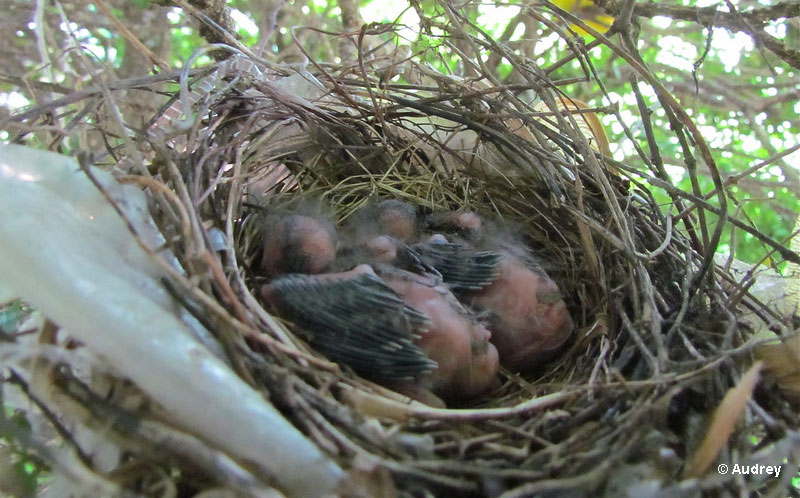
Some hatchlings, however, are completely helpless, such as these baby cardinals.
In altricial species, the chicks hatch completely helpless and need to be fed by parents for weeks or even months before becoming mature enough to find their own lunch. Some birds provide food directly in its original shape, while others offer pre-digested, regurgitated food.
Examples of Baby Bird Foods Across Species
Here are some examples of interesting chick-feeding strategies to illustrate just how diverse they are.
- Adult Blue Tits feed their chicks insects, while adults eat plant food (seeds) primarily.
- Goldfinches offer their young a regurgitated mix of insects and seeds.
- Swifts collect flies and other flying insects in their throat pouch while airborne and form feeding balls for their chicks.
- Hummingbird chicks eat a regurgitated mix of nectar and insects.
- Raptors and Owls feed their young age-appropriate meat chunks.
- Storks and Herons regurgitate semi-digested fish, amphibians, and other aquatic prey to their chicks.
- Pigeons, flamingos, and some penguins feed their chicks crop milk – a nutritious substance secreted in the crops of both parents (this is much different and more complex than regurgitation)
Now, let’s learn a bit more about the most popular items on the bird baby menu.
Crop milk
The most specialized form of feeding in birds is crop milk, which bird chicks of pigeons, flamingos, and certain penguins drink directly from their parent’s beaks.
Although it may superficially resemble regurgitation, crop milk feeding is completely different. Analogous to mammalian milk, the specialized glands in the lining of the parent birds’ upper digestive system excrete a milk-like thick substance. It becomes the sole food for their chicks until they’re grown up enough to forage on their own.
Crop milk is rich in fat, protein, immune boosters, and other nutrients that help chicks grow swiftly and healthily. Even after the chicks start foraging independently, parents continue to supplement them with crop milk for some time.
Insects
Insects are one of the most common foods for baby birds across various families. It is quite logical that fully insectivorous birds such as swifts and swallows also feed their young insects; but songbirds who eat plant food as adults also feed their young almost exclusively with insects and other arthropods.
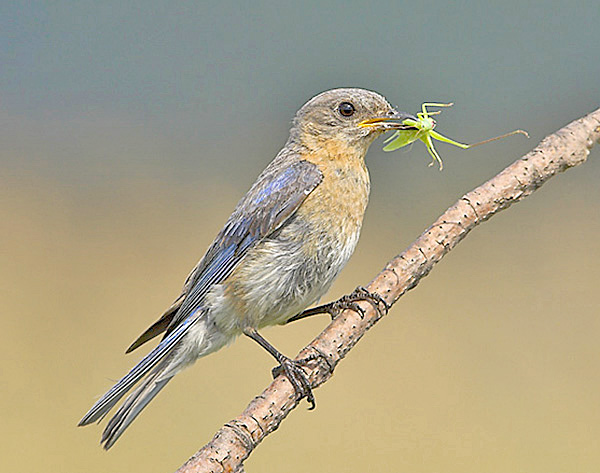
The nectar-eating hummingbirds also add insects to their regurgitated feeding slurries.
And, of course, precocial foraging chicks such as chickens and peafowl gladly take on insects and other invertebrates to enrich their diets.
Insects are such a popular baby food across the avian world because of their high nutritional value – and especially protein richness.
Meat
Birds of prey – eagles, owls, and hawks – feed their young with small chunks of meat from animals they hunt. They do not regurgitate any food for the chicks but introduce them to raw flesh from early on.
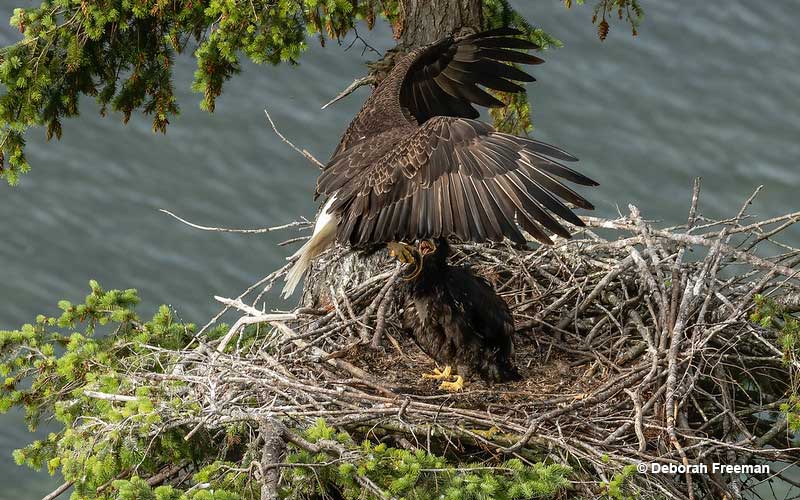
Birds of prey feed their young meat and fish, depending on diet.
Birds of prey take great care to provide just the right size of meat bits for their babies’ size and age. In time, parents give them larger and larger chunks and will eventually offer them the whole prey.
Watching an owl, for example, picking up the tiniest chunks of meat and giving them directly to an owlet is an endearing sight (despite the fact there is a butchered mammal or a reptile below – eek).
Other bird predators, such as herons, have a different feeding strategy – they regurgitate a mix of fish, reptiles, amphibians, crayfish, and other prey animals for the babies. Once the chicks become a month or so old, parents will start offering whole prey, primarily small fish.
After Leaving the Nest
Once altricial chicks become fledglings and leave the nest, they sure have a lot to adapt to. They need to learn to fly, find food, and watch out for predators simultaneously.
Related: How long do baby birds stay in the nest?
Fortunately, parent birds stick around for weeks after chicks fledge and continue to feed and protect their offspring, teaching them how to act and what to eat on the way.
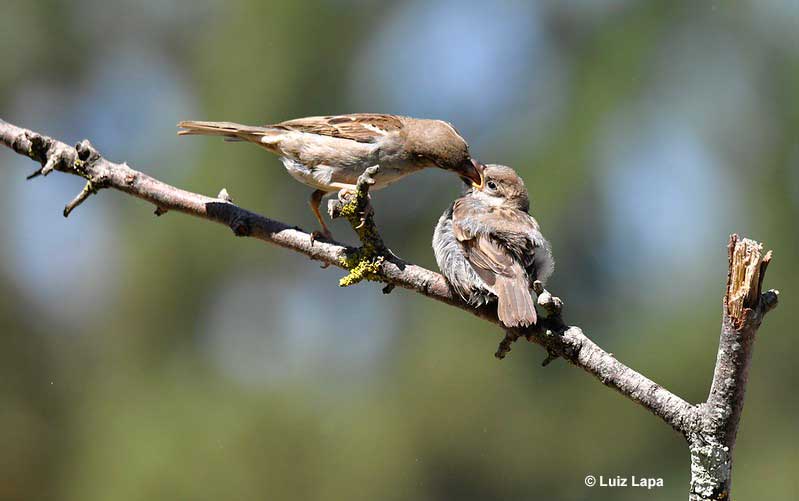
Most parents continue to stay near their young to help where needed.
Although fledglings seem extremely vulnerable and often abandoned, the truth is that this phase is a normal part of growing up.
If you see a fledgling chick on the ground, it doesn’t automatically mean it’s abandoned – rather, it is learning how to fend for itself under its parents’ hidden but watchful eyes.
What to Do When You Find a Baby Bird?
Despite popular opinion, taking the baby bird home to raise it to adulthood is one of the worst things to do. Birds easily imprint on their caregivers (thinking humans are their parents). However, unfortunately, humans can’t teach young birds adult bird survival skills, so the survival rate of hand-reared released rescues is poor.
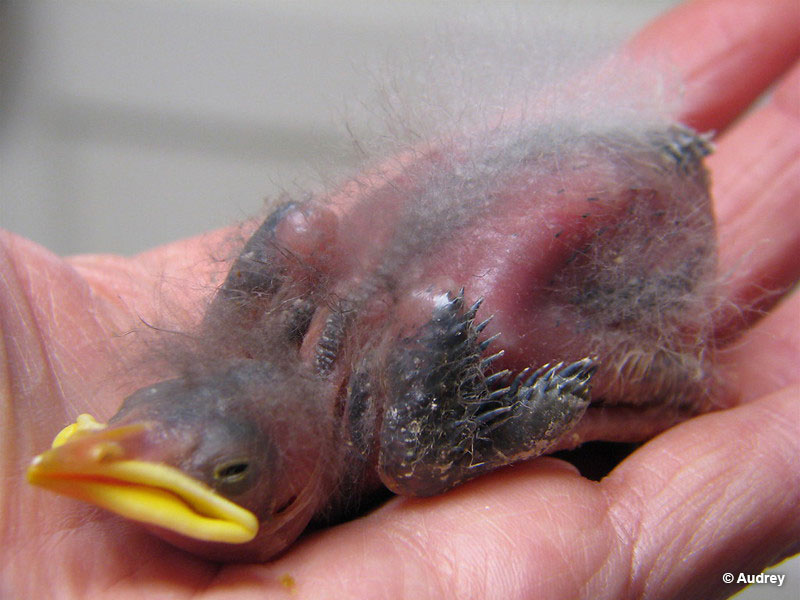
What you do with a baby bird when you find it depends on its age.
For hatchlings or nestlings, the best thing to do is to find a nest they fell out of and put it back. If that’s not possible, contact your local wildlife rehabilitation center or bird protection society. Specially trained rehabilitators can raise birds in a way that gives them a better chance of survival.
If you find a fledgling – an older chick that left the nest and is practicing flying but still can’t pull it off – simply try to put it in a safer spot. For example, if you find it on the ground, try to put it in a shrub or a tree to save it from ground predators.
However, it’s important not to take it too far away because parents still continue to feed and defend fledglings wandering around the nest weeks after they leave it.
Keep reading: What to do if you find a baby bird – the complete checklist
What Do Baby Birds Eat – Frequently Asked Questions
Do father birds feed their babies?
Male birds feed their young in a large majority of bird species. Since baby birds are so hungry and it takes a major effort to feed them, it is no wonder that bi-parental care proved to be the best evolutionary path. Eighty-five percent of birds practice bi-parental care.
Even in birds that provide crop milk, such as flamingos and pigeons, both parents secrete the nutritious substance. Thus, the male also actively feeds (or “nurses,” if you want) the chicks.
Why do baby birds poop right after eating?
Most bird chicks indeed poop right after eating, and the reason is intriguing.
Most nesting birds keep their nests clean and tidy – they regularly remove and (squeamish, beware) even eat their chicks’s poop.
The excrement is usually in the form of fecal sacks, which makes the job for the parents easier (if eating baby poop can ever be classified as easy).
However, because parents spend stretched periods hunting away from the nest, they have a very limited time to remove the poop before it all becomes a mess, facilitating the proliferation of bacteria and parasites. Thus, they have to do that at feeding time.
That is why nature has engineered a practical feedback loop – once the chicks get a new meal, they let the remains of the previous one out, allowing the parents to clean up immediately. Studies have even shown that baby chicks can hold it for up to two hours, waiting for their parents and that the mere presence of the parent can’t trigger defecation – only food does.
Why are baby birds always hungry?
Baby birds seem always hungry due to their rapid growth, and avian metabolism is generally fast. An average bird chick needs to consume at least 10% of their own body weight per a single meal.
Another reason they scream at their parent when they bring a juicy caterpillar or another nutritious meal is competition with their siblings. However, recently, it turned out that the strongest chick may not be that ruthless and purposefully allows their weaker brothers and sisters to have a nibble, too.
How often do baby birds eat?
Bird parents need to work almost around the clock to feed their chicks. For example, an average American Robin nesting pair must deliver 100- 150 meals daily to their always-hungry babies. Each chick may eat the number of invertebrates and berries equalling its current weight. Each baby robin may eat its weight in insects, worms, and berries every day.
When hand-rearing orphaned or pet altricial birds, a general recommendation is to feed them every three to four hours (meaning 5 to 6 feedings per day) during the first week. Once they open their eyes, you can reduce the number of feeds to one every 5 hours. The crops will look full once they’re done with the meal.
